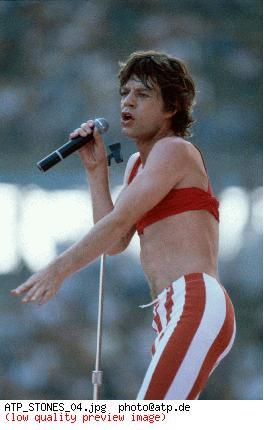Tell Me :
Talk

London June 1982 Dylan Martinez

Looks like Hampton

Concert Promoter Bill Graham 1981 - Neal Preston
Edited 1 time(s). Last edit at 2016-04-24 18:45 by exilestones.
Thanks. You are astonishing! I don't know how they keep coming.
June 7, 1982
Edited 4 time(s). Last edit at 2016-04-29 07:25 by exilestones.
It looks like Hannover, June 6, 1982. I just found more Hannover to post. See them soon!
Other Hannover images here: [www.iorr.org]
Edited 2 time(s). Last edit at 2016-04-29 07:06 by exilestones.
Talk about your favorite band.
For information about how to use this forum please check out forum help and policies.
Re: Stones 1981-1982 Wardrobes
Posted by:
exilestones
()
Date: April 23, 2016 19:50
Curtain draws on longstanding Ovation
by Dave Collins 2014

Mick Jagger strums an Ovation acoustic guitar while performing with
the Rolling Stones at Feijenoord Stadium in The Netherlands.
1982 Rob Verhorst Source: Supplied
AN Ovation guitar factory in the western Connecticut hills that produced instruments for music legends from Paul Simon to Cat Stevens to Glen Campbell will be closing in June after 47 years and production of the Ovation line in the US will stop, the manufacturer’s parent company told the shop’s 46 workers this week.
One former factory worker called it “the end of an iconic American brand”.
Fender Musical Instruments Corporation, based in Scottsdale, Arizona, and maker of the Stratocaster electric guitar, said in an announcement it was ceasing domestic production of Ovation guitars and closing the New Hartford factory, citing “current market conditions and insufficient volume levels”.
The company also said it was consolidating production of US-made acoustic instruments.
Ovations would continue to be manufactured outside the US, Fender spokesman Jason Farrell said yesterday. He said Fender also builds Ovations in China, South Korea and Indonesia.
“We are committed to providing the same high-quality musical instruments our artists, consumers and customers expect and demand, and will continue to support the brands that are currently being produced in New Hartford,” Fender senior vice-president Richard McDonald said.
The factory had been making Fender and Guild guitars since Fender bought Ovation’s owner, Kaman Music, in 2007. The shop opened in 1967 after Charles Kaman, an engineer who founded an aerospace company, developed the first Ovation guitar. Kaman died in 2011.
Richard Hall, who worked for Kaman and Ovation for three decades, including 18 years at the New Hartford plant, said Ovation made the first acoustic guitar that could be plugged in to an amplifier and the company had 66 per cent of the acoustic market in the US in the early 1990s.
“It’s the end of an iconic American brand,” Mr Hall said. “In the 1970s and 80s, just about every big touring band was playing Ovation.”

[www.ovationguitars.com]

Edited 2 time(s). Last edit at 2016-04-25 08:13 by exilestones.
by Dave Collins 2014

Mick Jagger strums an Ovation acoustic guitar while performing with
the Rolling Stones at Feijenoord Stadium in The Netherlands.
1982 Rob Verhorst Source: Supplied
AN Ovation guitar factory in the western Connecticut hills that produced instruments for music legends from Paul Simon to Cat Stevens to Glen Campbell will be closing in June after 47 years and production of the Ovation line in the US will stop, the manufacturer’s parent company told the shop’s 46 workers this week.
One former factory worker called it “the end of an iconic American brand”.
Fender Musical Instruments Corporation, based in Scottsdale, Arizona, and maker of the Stratocaster electric guitar, said in an announcement it was ceasing domestic production of Ovation guitars and closing the New Hartford factory, citing “current market conditions and insufficient volume levels”.
The company also said it was consolidating production of US-made acoustic instruments.
Ovations would continue to be manufactured outside the US, Fender spokesman Jason Farrell said yesterday. He said Fender also builds Ovations in China, South Korea and Indonesia.
“We are committed to providing the same high-quality musical instruments our artists, consumers and customers expect and demand, and will continue to support the brands that are currently being produced in New Hartford,” Fender senior vice-president Richard McDonald said.
The factory had been making Fender and Guild guitars since Fender bought Ovation’s owner, Kaman Music, in 2007. The shop opened in 1967 after Charles Kaman, an engineer who founded an aerospace company, developed the first Ovation guitar. Kaman died in 2011.
Richard Hall, who worked for Kaman and Ovation for three decades, including 18 years at the New Hartford plant, said Ovation made the first acoustic guitar that could be plugged in to an amplifier and the company had 66 per cent of the acoustic market in the US in the early 1990s.
“It’s the end of an iconic American brand,” Mr Hall said. “In the 1970s and 80s, just about every big touring band was playing Ovation.”
Lexington Ky 12-11-81

[www.ovationguitars.com]


Edited 2 time(s). Last edit at 2016-04-25 08:13 by exilestones.
Re: Stones 1981-1982 Wardrobes
Posted by:
exilestones
()
Date: April 23, 2016 20:12
CHICAGO





Ann Cusack
Edited 2 time(s). Last edit at 2016-04-23 20:40 by exilestones.





Ann Cusack
Edited 2 time(s). Last edit at 2016-04-23 20:40 by exilestones.
Re: Stones 1981-1982 Wardrobes
Posted by:
exilestones
()
Date: April 23, 2016 20:29
SEATTLE

Edited 1 time(s). Last edit at 2016-04-23 20:30 by exilestones.

Edited 1 time(s). Last edit at 2016-04-23 20:30 by exilestones.
Re: Stones 1981-1982 Wardrobes
Posted by:
exilestones
()
Date: April 23, 2016 20:51

London June 1982 Dylan Martinez
Re: Stones 1981-1982 Wardrobes
Posted by:
exilestones
()
Date: April 23, 2016 21:05

Looks like Hampton
Re: Stones 1981-1982 Wardrobes
Posted by:
exilestones
()
Date: April 24, 2016 18:44

Concert Promoter Bill Graham 1981 - Neal Preston
Edited 1 time(s). Last edit at 2016-04-24 18:45 by exilestones.
Re: Stones 1981-1982 Wardrobes
Posted by:
exilestones
()
Date: April 25, 2016 08:12
San Francisco
October 17, 1981
[www.oocities.org]
1981 U.S. Tour
Intro: Take The A Train
1. Under My Thumb
2. When The Whip Comes Down
3. Let's Spend The Night Together
4. Shattered
5. Neighbours
6. Black Limousine
7. Just My Imagination (Running Away With Me)
8. Twenty Flight Rock
9. Let Me Go
10. Time Is On My Side
11. Beast Of Burden
12. Waiting On A Friend
13. Let It Bleed
14. You Can't Always Get What You Want
15. Little T&A
16. Tumbling Dice
17. She's So Cold
18. All Down The Line
19. Hang Fire
20. Star Star
21. Miss You
22. Start Me Up
23. Honky Tonk Women
24. Brown Sugar
25. Jumpin' Jack Flash
26. (I Can't Get No)Satisfaction (Encore)
Additional Musicians:Ian Stewart, Ian McLagan, Lee Allen, Ernie Watts, Bobby Keys
Other songs played on the other shows
"Down The Road Apiece" Sep.26 JFK Stadium, Philadelphia, PA etc.
"Mona (I Need You Baby)" Sep.26 JFK Stadium, Philadelphia, PA etc.
"Going To A Go-Go" Nov.3 Freedom Hall Coliseum, Louisville, KY etc.
"Tops" Sep.25 JFK Stadium, Philadelphia, PA etc.
"Street Fighting Man" Sep.25 JFK Stadium, Philadelphia, PA etc.
"Sympathy For The Devil" Sep.14 Morgan's Cove, Worcester, MA

Edited 2 time(s). Last edit at 2016-04-27 10:15 by exilestones.
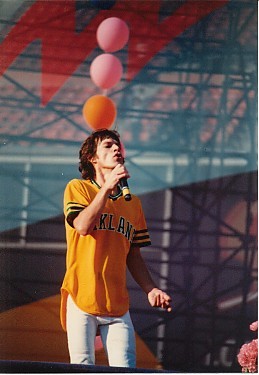
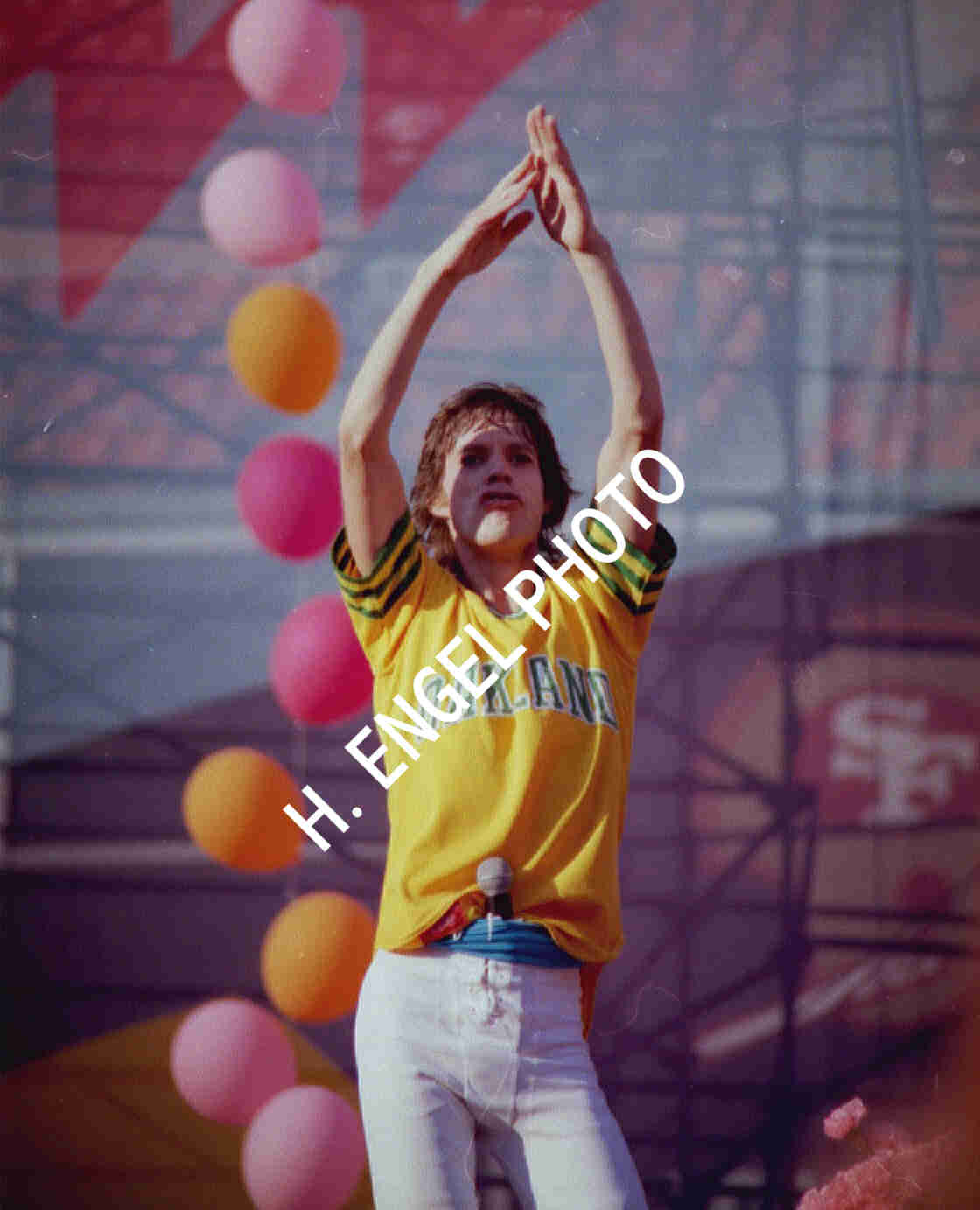

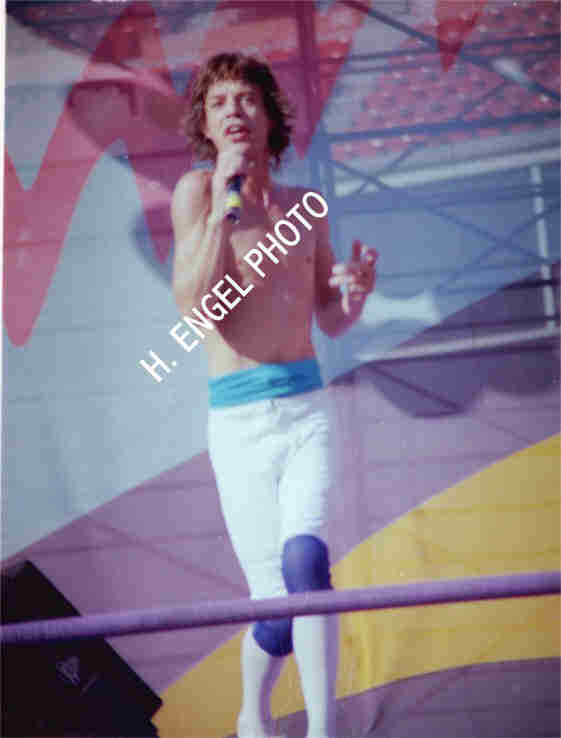
October 17, 1981
[www.oocities.org]
1981 U.S. Tour
Intro: Take The A Train
1. Under My Thumb
2. When The Whip Comes Down
3. Let's Spend The Night Together
4. Shattered
5. Neighbours
6. Black Limousine
7. Just My Imagination (Running Away With Me)
8. Twenty Flight Rock
9. Let Me Go
10. Time Is On My Side
11. Beast Of Burden
12. Waiting On A Friend
13. Let It Bleed
14. You Can't Always Get What You Want
15. Little T&A
16. Tumbling Dice
17. She's So Cold
18. All Down The Line
19. Hang Fire
20. Star Star
21. Miss You
22. Start Me Up
23. Honky Tonk Women
24. Brown Sugar
25. Jumpin' Jack Flash
26. (I Can't Get No)Satisfaction (Encore)
Additional Musicians:Ian Stewart, Ian McLagan, Lee Allen, Ernie Watts, Bobby Keys
Other songs played on the other shows
"Down The Road Apiece" Sep.26 JFK Stadium, Philadelphia, PA etc.
"Mona (I Need You Baby)" Sep.26 JFK Stadium, Philadelphia, PA etc.
"Going To A Go-Go" Nov.3 Freedom Hall Coliseum, Louisville, KY etc.
"Tops" Sep.25 JFK Stadium, Philadelphia, PA etc.
"Street Fighting Man" Sep.25 JFK Stadium, Philadelphia, PA etc.
"Sympathy For The Devil" Sep.14 Morgan's Cove, Worcester, MA

Edited 2 time(s). Last edit at 2016-04-27 10:15 by exilestones.
Re: Stones 1981-1982 Wardrobes
Posted by:
exilestones
()
Date: April 25, 2016 08:39
SAN FRANCISCO
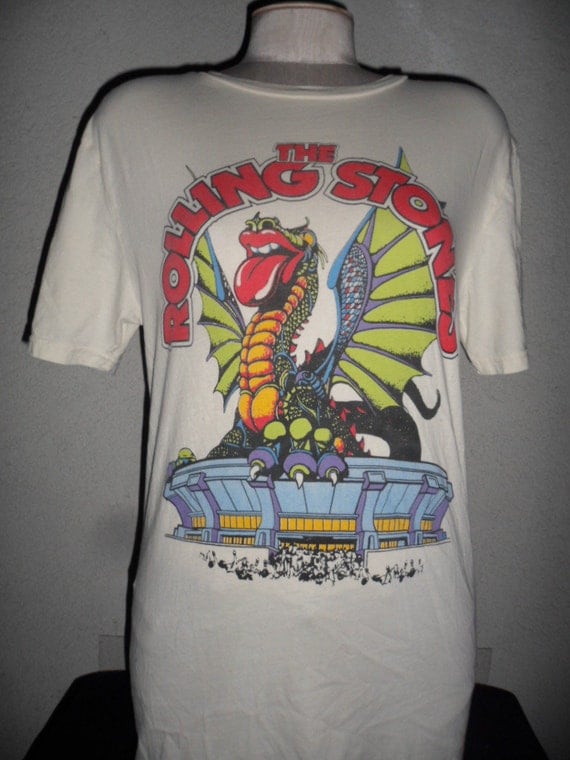
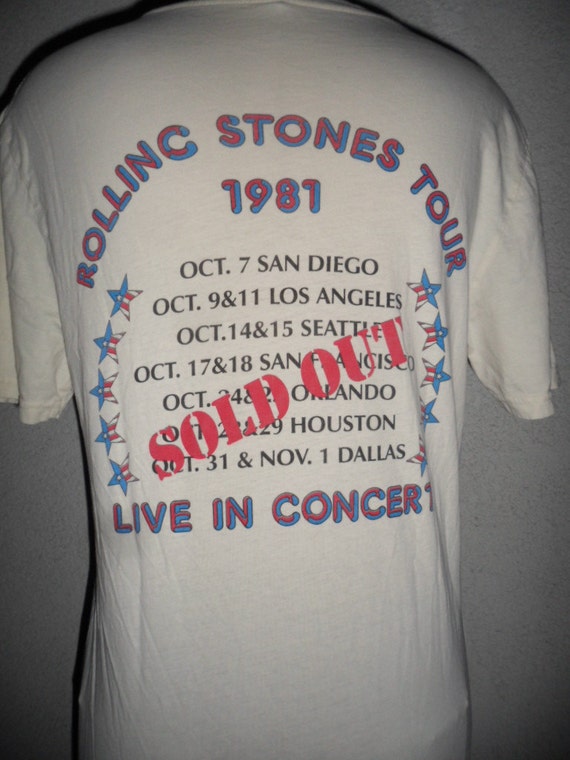
white sleeves
Edited 1 time(s). Last edit at 2016-04-27 10:10 by exilestones.


b

v









white sleeves
Edited 1 time(s). Last edit at 2016-04-27 10:10 by exilestones.
Re: Stones 1981-1982 Wardrobes
Posted by:
exilestones
()
Date: April 25, 2016 09:38
[www.youtube.com] Candlestick Park 1981 Part 1
[www.youtube.com] Candlestick Park October 17th 1981 Part 2
[www.youtube.com] Candlestick Part October 17th 1981 Part 3
Edited 2 time(s). Last edit at 2016-05-02 06:52 by exilestones.
[www.youtube.com] Candlestick Park October 17th 1981 Part 2
[www.youtube.com] Candlestick Part October 17th 1981 Part 3
Edited 2 time(s). Last edit at 2016-05-02 06:52 by exilestones.
Re: Stones 1981-1982 Wardrobes
Posted by:
exilestones
()
Date: April 27, 2016 08:52
RS 1981 CHECKERBOARD LOUNGE
Muddy Waters & The Rolling Stones - Checkerboard Lounge: Live Chicago 1981



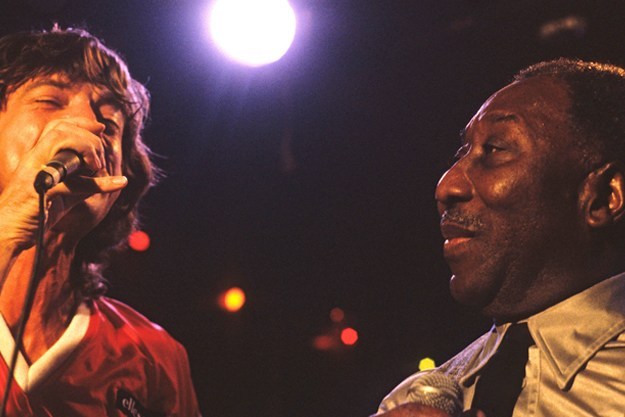

x
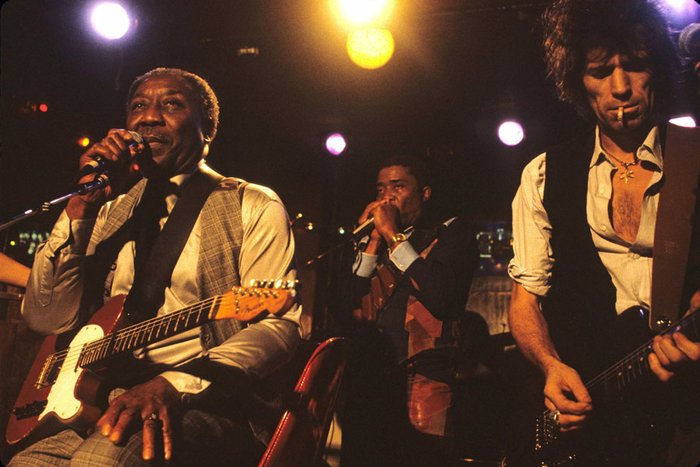
.jpg)
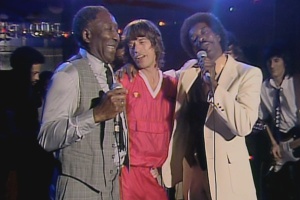


MUDDY WATERS ~ ROLLING STONES ~ BUDDY GUY ~ JUNIOR WELLS ~ LEFTY DIZZ
"The blues had a baby and They named it rock and roll," Muddy Waters once sang. Few other bands have this combination of blues and rock in recent decades so perfectly performed as The Rolling Stones, owe their name turn the Waters song "Mannish Boy."
November 22, 1981 as the Stones came to Chicago to play there three nights in a row in the Rosemont Horizon, they visited the Checkerboard Lounge, Buddy Guys small blues club in the South Side to see Muddy and band live. Of course, it kept the Stones not long in the audience, as the finally appears on DVD recording "Checkerboard Lounge: Live Chicago 1981 'shows.
The show starts relatively quiet and unspectacular. Waters' band playing "Sweet Little Angel and" Flip Flop And Fly "(Piano Player Lovie Lee takes over the singing) before the boss is personally called on stage and immediately in moving performances of" You Do not Have To Go "and" Country Boy "loses. While "Baby Please Do not Go" something is happening in front of the stage.
The Stones entered the lounge, sit at their tables, accompanied by Waters' amused eyes. Long he does not wait and asks repeatedly Mick Jagger on stage, which must be persuaded first. Quick follow Keith Richards and Ron Wood, while the hall is boiling over. The audience shaking their heads, impressed and slightly confused as "Hoochie Coochie Man" a monstrous jam session brings the ball rolling.
For "Mannish Boy" the stage is really crowded. Hardly Jagger and Waters have sung in a true noise, enter gradually Buddy Guy, Junior Wells (the man who a young Stones frontman a few tricks on the harmonica showed) and Lefty Dizz the stage.
Now there is no stopping Jagger's and Waters' sit in the audience to watch the action.
Wells grabs his harmonica, Lefty Dizz is the bandleader and brings out his guitar, the quintessence of the Blues out before one last time feels the stage to the final "Champagne And Reefer". Apart from Buddy Guy now all are on the way too small boards, elbow room is a foreign word, the soul of a genre and its drying pulling son whip each other up.
Amidst the mayhem are a grinning Muddy Waters and an ecstatic, childlike acting Mick Jagger, who can hardly believe his luck; nor the still perplexed audience.
What happens in those 90 minutes and is magical. Waters in itself is already an experience, but this spontaneous jam session with the Stones, which is a all
star gig with a journey through the history of the Blues (only "Rollin 'Stone" is missing, but would have been too obvious) celebrated.
Carefully restored and mixed by Bob Clearmountain and mastered, radiates "Checkerboard Lounge: Live Chicago 1981 'in a new light, is an absolute must-have for Blues fans. Even 30 years later, the magic of this historic night looks even more after.
Release: 06.07.2012
Eagle Vision (Edel Music Distribution)
Checkerboard Lounge: Live Chicago 1981 @ Amazon Buy
[www.beatblogger.de]
+++++++++++++++++++++++
Muddy Waters and The Rolling Stones Checkerboard Lounge
by Jonny Meister
The release late in 2012 of the DVD “Muddy Waters & The Rolling Stones Checkerboard Lounge 1981? once again brings to my mind the strange relationship between blues and rock ‘n’ roll.
The great Muddy Waters is in his last years, performing at Buddy Guy’s Checkerboard Lounge with his final band, which includes John Primer on guitar, Mojo Buford on harmonica, and Lovie Lee on piano. Lee does a couple of opening numbers, and then Muddy comes out to sing a simmering version of “You Don’t Have To Go.”
This show occurs almost four decades after Muddy’s days on the plantations in Mississippi, but the power of that musical heritage is only enhanced by his maturity and elder statesman status in the world the blues. During Muddy’s third song, there’s a shot of the Rolling Stones entering the club and then one of their being seated at a table in front of the stage. Muddy invites them to “take your time” and have a drink, and then calls out for Mick Jagger to join him. Jagger, either coy or genuinely anxious about joining Muddy, needs a few requests from the master before he gets up with him.
Soon Muddy says “What about Keith?” and Keith Richards and later Ron Wood also get up on stage, both furiously puffing cigarettes while playing guitar, the cigarettes never leaving their mouths, almost as if they were fig leaves in post-fall Blues Eden. They are kind of a comical duo to be sure (I wonder how they get any actual oxygen to breathe as well!).
What goes through the mind of the great blues master hosting the world’s biggest active rock band on a nightclub stage in Chicago? The Stones, like many other rockers, at times seemed to worship at the altar of these blues masters, yet the rockers are always the real stars, and the reverence often has its lapses – - as when The Stones initially took credit for “Prodigal Son,” later correcting it to indicate authorship by Rev. Robert Wilkins. It’s definitely a two-sided coin. The influence of the rock musicians did make blues known for wider audience, but the blues artists are ultimately always in a subordinate position, and for true blues lovers, whose love of blues transcends the fact that it is the major ingredient in rock, the whole thing can be a bit grating.
Muddy and Mick sing “Hoochie Coochie Man” together, and when Mick sings the line, “I was born for good luck,” Muddy replies, “I see that!” It’s hard not to see this exchange in a broader context than just the song.
Muddy calls out for Buddy Guy, who joins the group on stage repeatedly embracing Jagger. Muddy also calls for Junior Wells, who embraces Muddy and seems largely unaware of Jagger. Perhaps I’m reading too much into this, but some deep blues fans have been troubled by Buddy’s relationship with the rockers, how he seems to defer to Eric Clapton, and appears to get on board with each ephemeral rock phenom that comes along. To be sure, Buddy has talked about how some of the greats of Chicago blues didn’t get what they should get, and he was determined that would not be his situation. Junior seemed less interested in courting the rockers.
Unfortunately, too many very talented blues artists never did benefit from recognition in the rock world. Lefty Dizz joins the band at one point, a great left-handed guitarist and singer who leads things for a while while Muddy and Mick sit out, and is certainly more fun to watch than the “cigarette twins” (except when Keith’s long ash finally falls from his cigarette while he’s playing). Lefty is one of the many artists that only the true blues lovers got to know and appreciate. Mick, sitting at a table, definitely appreciates him, but rock ‘n roll, while it did advance the career of Muddy Waters, did little for Lefty Dizz and most other Chicago blues players.
Muddy and Mick are both shown responding approvingly to Lefty’s politically incorrect song “Ugly Woman.” Both come back at the end for a few more songs, with plenty of guitar support, from John Primer, Keith Richards, and Ron Wood. Primer’s appearance on this DVD is especially welcome. His playing is great, and there is a bonus cut where he sings lead. He is still active today with a new album “Blues On Solid Ground,” issued last year.
As a “blues lover first” I may view this DVD somewhat differently from a rock-oriented viewer. I’m especially excited By Primer and Lefty Dizz, who are not publicized in the title of the disc, and Muddy remains transcendent for sure. The Stones are more interesting as a cultural phenomenon than as blues players.
To my thinking, the Stones’ greatness lies not in what they do with blues, but in their own songs, which clearly incorporate their knowledge of the blues, but are really a different sort of music. This DVD certainly contains some great performances and some moments of fun, but it is also a reminder of just who stands where in the music world, and how blues artists and blues music played a crucial role in popular music while ultimately never quite rising above a “best supporting” role themselves.
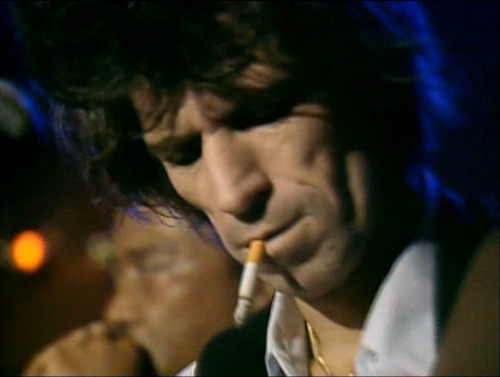


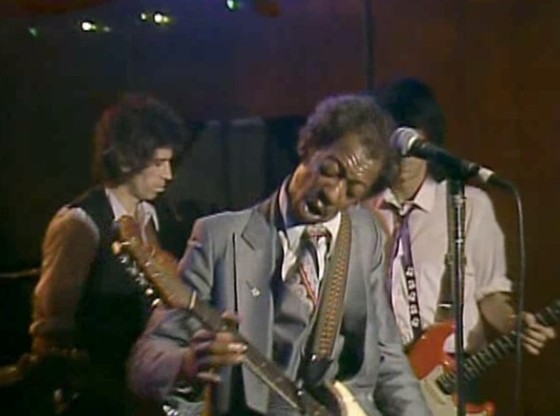
Lefty Dizz
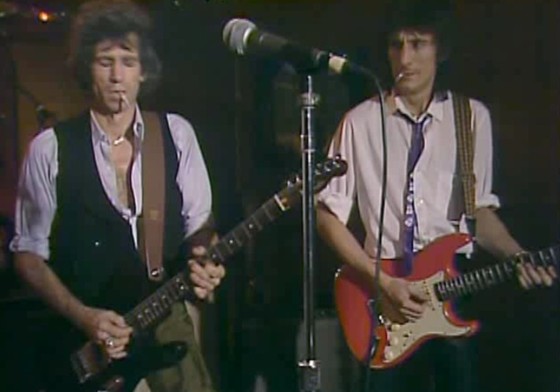
Keith Richards and Ron Wood “The Cigarette Twins”
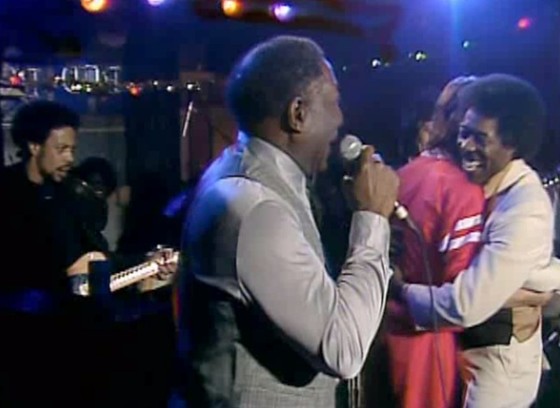
John Primer, Muddy Waters, Mick Jagger, Buddy Guy
[mississippibluesproject.org]
++++++++++++++++
Posted by: toomuchforme
+++++++++++++++++++
Posted by: Lien

+++++++++++++++++++
Posted by: Rockman

[www.cdjapan.co.jp]
+++++++++++++++++++
Posted by: Lien

+++++++++++++++++++
Posted by: Toru A

+++++++++++++++++++
Posted by: shortfatfanny

+++++++++++++++++++
More: [www.iorr.org]
Muddy Waters & The Rolling Stones - Checkerboard Lounge: Live Chicago 1981





x


.jpg)



MUDDY WATERS ~ ROLLING STONES ~ BUDDY GUY ~ JUNIOR WELLS ~ LEFTY DIZZ
"The blues had a baby and They named it rock and roll," Muddy Waters once sang. Few other bands have this combination of blues and rock in recent decades so perfectly performed as The Rolling Stones, owe their name turn the Waters song "Mannish Boy."
November 22, 1981 as the Stones came to Chicago to play there three nights in a row in the Rosemont Horizon, they visited the Checkerboard Lounge, Buddy Guys small blues club in the South Side to see Muddy and band live. Of course, it kept the Stones not long in the audience, as the finally appears on DVD recording "Checkerboard Lounge: Live Chicago 1981 'shows.
The show starts relatively quiet and unspectacular. Waters' band playing "Sweet Little Angel and" Flip Flop And Fly "(Piano Player Lovie Lee takes over the singing) before the boss is personally called on stage and immediately in moving performances of" You Do not Have To Go "and" Country Boy "loses. While "Baby Please Do not Go" something is happening in front of the stage.
The Stones entered the lounge, sit at their tables, accompanied by Waters' amused eyes. Long he does not wait and asks repeatedly Mick Jagger on stage, which must be persuaded first. Quick follow Keith Richards and Ron Wood, while the hall is boiling over. The audience shaking their heads, impressed and slightly confused as "Hoochie Coochie Man" a monstrous jam session brings the ball rolling.
For "Mannish Boy" the stage is really crowded. Hardly Jagger and Waters have sung in a true noise, enter gradually Buddy Guy, Junior Wells (the man who a young Stones frontman a few tricks on the harmonica showed) and Lefty Dizz the stage.
Now there is no stopping Jagger's and Waters' sit in the audience to watch the action.
Wells grabs his harmonica, Lefty Dizz is the bandleader and brings out his guitar, the quintessence of the Blues out before one last time feels the stage to the final "Champagne And Reefer". Apart from Buddy Guy now all are on the way too small boards, elbow room is a foreign word, the soul of a genre and its drying pulling son whip each other up.
Amidst the mayhem are a grinning Muddy Waters and an ecstatic, childlike acting Mick Jagger, who can hardly believe his luck; nor the still perplexed audience.
What happens in those 90 minutes and is magical. Waters in itself is already an experience, but this spontaneous jam session with the Stones, which is a all
star gig with a journey through the history of the Blues (only "Rollin 'Stone" is missing, but would have been too obvious) celebrated.
Carefully restored and mixed by Bob Clearmountain and mastered, radiates "Checkerboard Lounge: Live Chicago 1981 'in a new light, is an absolute must-have for Blues fans. Even 30 years later, the magic of this historic night looks even more after.
Release: 06.07.2012
Eagle Vision (Edel Music Distribution)
Checkerboard Lounge: Live Chicago 1981 @ Amazon Buy
[www.beatblogger.de]
+++++++++++++++++++++++
Muddy Waters and The Rolling Stones Checkerboard Lounge
by Jonny Meister
The release late in 2012 of the DVD “Muddy Waters & The Rolling Stones Checkerboard Lounge 1981? once again brings to my mind the strange relationship between blues and rock ‘n’ roll.
The great Muddy Waters is in his last years, performing at Buddy Guy’s Checkerboard Lounge with his final band, which includes John Primer on guitar, Mojo Buford on harmonica, and Lovie Lee on piano. Lee does a couple of opening numbers, and then Muddy comes out to sing a simmering version of “You Don’t Have To Go.”
This show occurs almost four decades after Muddy’s days on the plantations in Mississippi, but the power of that musical heritage is only enhanced by his maturity and elder statesman status in the world the blues. During Muddy’s third song, there’s a shot of the Rolling Stones entering the club and then one of their being seated at a table in front of the stage. Muddy invites them to “take your time” and have a drink, and then calls out for Mick Jagger to join him. Jagger, either coy or genuinely anxious about joining Muddy, needs a few requests from the master before he gets up with him.
Soon Muddy says “What about Keith?” and Keith Richards and later Ron Wood also get up on stage, both furiously puffing cigarettes while playing guitar, the cigarettes never leaving their mouths, almost as if they were fig leaves in post-fall Blues Eden. They are kind of a comical duo to be sure (I wonder how they get any actual oxygen to breathe as well!).
What goes through the mind of the great blues master hosting the world’s biggest active rock band on a nightclub stage in Chicago? The Stones, like many other rockers, at times seemed to worship at the altar of these blues masters, yet the rockers are always the real stars, and the reverence often has its lapses – - as when The Stones initially took credit for “Prodigal Son,” later correcting it to indicate authorship by Rev. Robert Wilkins. It’s definitely a two-sided coin. The influence of the rock musicians did make blues known for wider audience, but the blues artists are ultimately always in a subordinate position, and for true blues lovers, whose love of blues transcends the fact that it is the major ingredient in rock, the whole thing can be a bit grating.
Muddy and Mick sing “Hoochie Coochie Man” together, and when Mick sings the line, “I was born for good luck,” Muddy replies, “I see that!” It’s hard not to see this exchange in a broader context than just the song.
Muddy calls out for Buddy Guy, who joins the group on stage repeatedly embracing Jagger. Muddy also calls for Junior Wells, who embraces Muddy and seems largely unaware of Jagger. Perhaps I’m reading too much into this, but some deep blues fans have been troubled by Buddy’s relationship with the rockers, how he seems to defer to Eric Clapton, and appears to get on board with each ephemeral rock phenom that comes along. To be sure, Buddy has talked about how some of the greats of Chicago blues didn’t get what they should get, and he was determined that would not be his situation. Junior seemed less interested in courting the rockers.
Unfortunately, too many very talented blues artists never did benefit from recognition in the rock world. Lefty Dizz joins the band at one point, a great left-handed guitarist and singer who leads things for a while while Muddy and Mick sit out, and is certainly more fun to watch than the “cigarette twins” (except when Keith’s long ash finally falls from his cigarette while he’s playing). Lefty is one of the many artists that only the true blues lovers got to know and appreciate. Mick, sitting at a table, definitely appreciates him, but rock ‘n roll, while it did advance the career of Muddy Waters, did little for Lefty Dizz and most other Chicago blues players.
Muddy and Mick are both shown responding approvingly to Lefty’s politically incorrect song “Ugly Woman.” Both come back at the end for a few more songs, with plenty of guitar support, from John Primer, Keith Richards, and Ron Wood. Primer’s appearance on this DVD is especially welcome. His playing is great, and there is a bonus cut where he sings lead. He is still active today with a new album “Blues On Solid Ground,” issued last year.
As a “blues lover first” I may view this DVD somewhat differently from a rock-oriented viewer. I’m especially excited By Primer and Lefty Dizz, who are not publicized in the title of the disc, and Muddy remains transcendent for sure. The Stones are more interesting as a cultural phenomenon than as blues players.
To my thinking, the Stones’ greatness lies not in what they do with blues, but in their own songs, which clearly incorporate their knowledge of the blues, but are really a different sort of music. This DVD certainly contains some great performances and some moments of fun, but it is also a reminder of just who stands where in the music world, and how blues artists and blues music played a crucial role in popular music while ultimately never quite rising above a “best supporting” role themselves.




Lefty Dizz

Keith Richards and Ron Wood “The Cigarette Twins”

John Primer, Muddy Waters, Mick Jagger, Buddy Guy
[mississippibluesproject.org]
++++++++++++++++
Posted by: toomuchforme
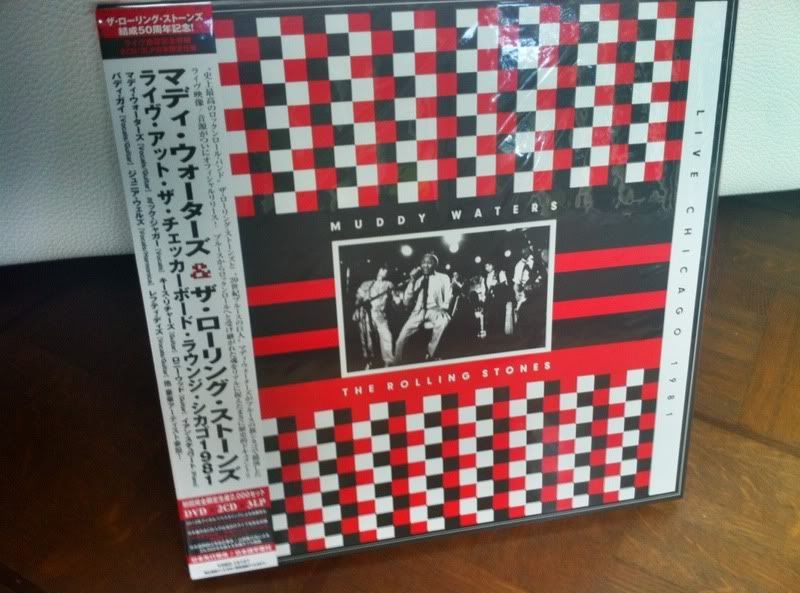
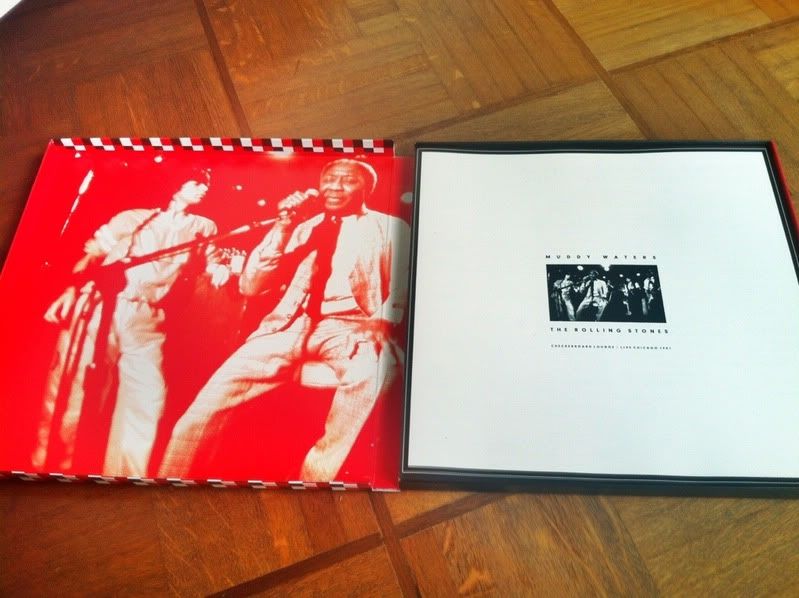
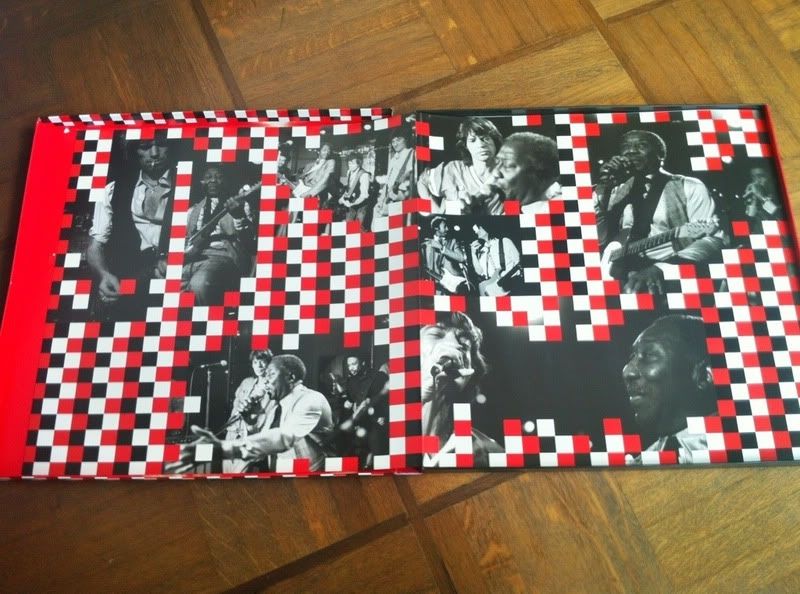
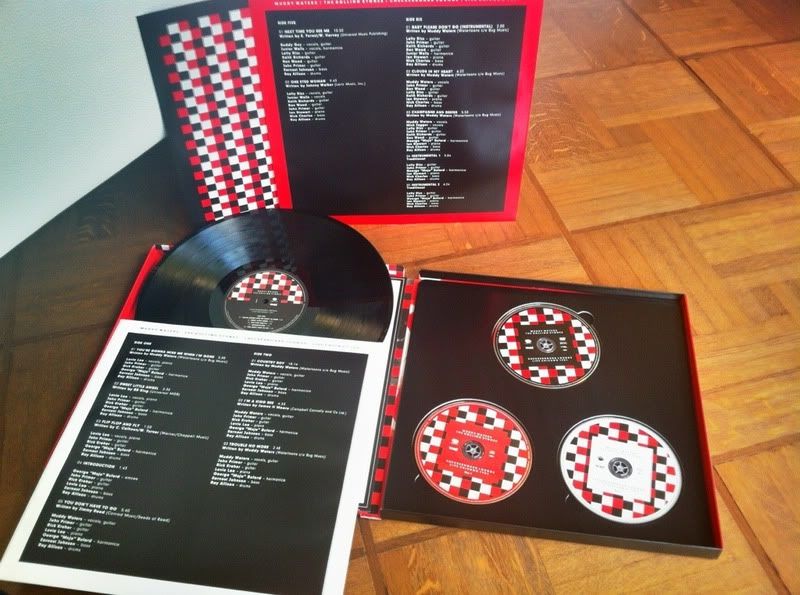
+++++++++++++++++++
Posted by: Lien

+++++++++++++++++++
Posted by: Rockman

[www.cdjapan.co.jp]
+++++++++++++++++++
Posted by: Lien

+++++++++++++++++++
Posted by: Toru A

+++++++++++++++++++
Posted by: shortfatfanny

+++++++++++++++++++
More: [www.iorr.org]
Re: Stones 1981-1982 Wardrobes
Posted by:
exilestones
()
Date: April 27, 2016 08:53
++++++++++++++++++++++++++++++++++++++++++++++++++++++++++++++++++++++++++++
ROLLING STONES & MUDDY WATERS Live At The Checkerboard '81 (2012 Japanese only Limited Edition 6-disc [3-LP/DVD/2-CD] set - On 22nd November 1981, in the middle of their mammoth American tour, the Rolling Stones arrived in Chicago prior to playing 3 nights atthe Rosemont Horizon. Long influenced by the Chicago blues, the band paid a visit to Muddy Waters' club the Checkerboard Lounge to see the legendary bluesman perform. It didn't take long before Mick Jagger, Keith Richards, RonnieWood and Ian Stewart were joining in on stage and later Buddy Guy and Lefty Dizz also played their part. It was a unique occasion that was fortunately captured on camera. Now, restored from the original footage and with sound mixed and mastered by Bob Clearmountain, this amazing blues night is being made available in an official release for the first time. Each LP comes in their own sleeve with the two CD's and DVD together in a card panel, all housed in a clam shell style card picture box complete with two booklets and original obi-strip. This example is in the un-opened re-sealable bag, and remains in an unplayed, as new condition VQBD-10107)
***Limited to 2000 Copies Only in Japan.
: DVD
1. Sweet Little Angel
2. Flip Flop and Fly
3. Introduction
4. You Don't Have to Go
5. Country Boy
6. Baby Please Don't Go
7. Hoochie Coochie Man
8. Long Distance Call
9. Mannish Boy
10. Got My Mojo Workin'
11. Next Time You See Me
12. One Eyed Woman
13. Baby Please Don't Go (Instrumental)
14. Clouds in My Heart
15. Champagne and Reefer
16. Instrumental
Bonus Footage:-
You're Gonna Miss Me When I'm Gone
Black Limousine (From Hampton Coliseum, 1981)
CD
Disc 1
1. You're Gonna Miss Me When I'm Gone
2. Sweet Little Angel
3. Flip Flop and Fly
4. Introduction
5. You Don't Have to Go
6. Country Boy
7. I'm A King Bee
8. Trouble No More
9. Country Jail
10. Baby Please Don't Go
11. Hoochie Coochie Man
Disc 2
1. Long Distance Call
2. Mannish Boy
3. Got My Mojo Workin'
4. Next Time You See Me
5. One Eyed Woman
6. Baby Please Don't Go (Instrumental)
7. Clouds in My Heart
8. Champagne and Reefer
9. Instrumental 1
10. Instrumental 2
LP
Side One
1. You're Gonna Miss Me When I'm Gone
2. Sweet Little Angel
3. Flip Flop and Fly
4. Introduction
5. You Don't Have to Go
Side Two
1. Country Boy
2. I'm A King Bee
3. Trouble No More
Side Three
1. Country Jail
2. Baby Please Don't Go
3. Hoochie Coochie Man
Side Four
1. Long Distance Call
2. Mannish Boy
3. Got My Mojo Workin'
Side Five
1. Next Time You See Me
2. One Eyed Woman
Side Six
1. Baby Please Don't Go (Instrumental)
2. Clouds in My Heart
3. Champagne and Reefer
4. Instrumental 1
5. Instrumental 2
[eil.com]
++++++++++++++++++++++++
Review: Muddy Waters and The Rolling Stones Live at The Checkerboard Lounge, Chicago 1981 DVD/CD (2012)

“He stole my music but he gave me my name.”
— Muddy Waters on Mick Jagger
On a cold Winter night, November 22, 1981, the Rolling Stones arrived in Chicago. Smack in the middle of their North American ‘Tattoo You’ tour, just prior to playing 3 nights at the Rosemont Horizon, they paid their respects to their idol Muddy Waters by stopping by Buddy Guy’s Chicago ‘juke joint’ the Checkerboard Lounge, to see the legendary bluesman perform. It didn’t take long before Mick Jagger, Keith Richards, Ronnie Wood and Ian Stewart were joining Waters on stage. Later, Buddy Guy and Lefty Dizz joined them onstage, too.
This monumental and historic event was thankfully captured on camera. Restored from the original footage, with sound mixed and mastered by the legendary Bob Clearmountain, this official release (after many years of bootleg tapes circulating about) by Eagle Vision is a true must have for all fans of Chicago blues, Muddy Waters and the Rolling Stones. Eagle Vision outdid themselves here: giving it both nice packaging and a very reasonable price. The DVD itself is under $15.00, and the combo pack with the audio CD, with 11 of the 13 numbers, is only five bucks more. The camera work is excellent, with nice close ups that really allow the viewer to enjoy Waters and Jagger riffing with each other.
The whole show lasts 106 minutes, including two numbers up front by Waters’ band- without the ‘Hootchie Cootchie Man’ himself. Waters sings his classics and plays on some of them, although he did put away his guitar on some numbers. Jagger, Richards and Wood were on stage with Waters for quite a lot of songs, with both Waters and Jagger leaving the stage for two songs by guitarist/vocalist Lefty Dizz (though Wood and Richards remain on stage). With the inclusion of Junior Wells on that small stage it was one big musical event, to say the least.
The performances are quite loose-at some points rather chaotic-as the musicians jump on and off the low stage with tables right up to the edge. At other times the music is really tight and nothing less than brilliant. When the Stones showed up and began jamming, the band definitely picked up the pace, especially the rhythm section which did a tremendous job of ‘roping in’ the overall sound that night, preventing it from spiraling out of control.
During part of the show, Mick and Muddy take a seat to allow Jr. Wells, Buddy Guy and Lefty Dizz to take turns at center stage. Dizz, apparently more than a bit tipsy, ends his feature song standing precariously at the very edge of the stage, flailing his arms around, saying (or singing) something, without a microphone, to the audience . You can’t actually hear what he’s saying, but whatever he said to the audience (and the band) elicited reactions ranging from amusement to horror, lol! Wells had to take control of the stage at that point, literally pushing Dizz off stage.
It’s the inclusion of such spontaneous, unplanned sequences which gives one such an intimate, “I was there” feel while watching, yet avoids casting a pallor on the rest of the show. Add to this the simply first rate guitar playing (featuring some stunning solos) from Wood, Richards, Waters, Guy, and the guitarists in Muddy’s band, and you have an evening of blues music that was/is truly unforgettable.
Sadly, Muddy was in poor health at this time in his life (he passed away a mere two years afterward), and he spent most of the show sitting on a stool on stage. But when the band ripped into Mannish Boy, Muddy couldn’t keep in his seat: he was up and jumping around like a young man again! It was at that pivotal point in the show that one could see a glimpse of the power that Waters had once possessed in his prime.
The package includes 16 tracks on the DVD, eleven of which are featured on the CD. The DVD adds two bonus performances. The bonus features are cuts from the Hampton Coliseum 1981 show and are interesting in their own right. The DVD does not include the whole show, and the songs are edited to take out the dead spots when musicians are going on/off stage, etc. It also includes a well-assembled 8 page booklet that includes photos and an essay by Robert Gordon.
In his recent autobiography, Keith Richards describes how early in their career the Stones complained about playing rock and roll when their true goal was to be the best blues band in London. In this terrific DVD/CD compilation one can argue that the ‘passing of the torch’ so to speak was successfully made between generations. The Stones’ awe and admiration of ‘the master’ is clearly evident, and Muddy’s smile is genuine as he beams with obvious pride at his musical ‘children.’ As the old saying goes:the blues had a baby and they named it rock & roll!
Performers: Muddy Waters (vocals, guitar); Mick Jagger (vocals); Keith Richards (guitar); Ronnie Wood (guitar); Ian Stewart (piano); Buddy Guy (vocals, guitar); Lefty Dizz (vocals, guitar); Junior Wells (harmonica, vocals); George Mojo Buford (harmonica); Lovie Lee (piano); Earnest Johnson (bass); Ray Allison (drums); John Primer (guitar); Rick Kreher (guitar); Nick Charles (bass)


+++++++++++++
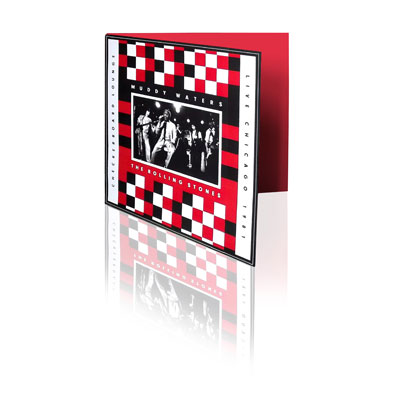


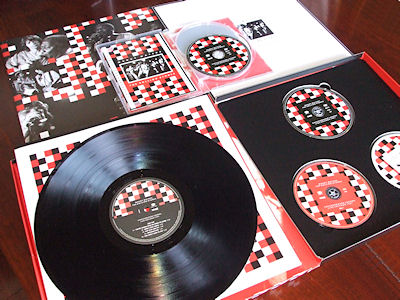
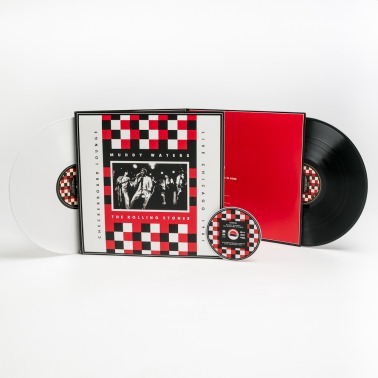

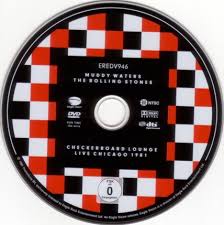
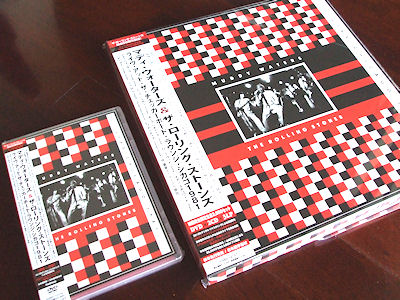


The Checkerboard Lounge was a blues club in Bronzeville on the South Side of Chicago, founded in the 1950s and owned for a period by Buddy Guy from 1972 to the early 1980s.
+++++++++++++++++++++++++++++++++++++++++++++++++++++
SIDEMAN
by Carlo Rotella

Guy (striped shirt) and company outside the Checkerboard, 1982. Photograph: Marc PoKempner
On the wall by my desk I have mounted a photograph of a confrontation that took place on the sidewalk outside the Checkerboard Lounge, at 43rd and Vincennes on the South Side of Chicago, in 1982. In the picture, the great bluesman Buddy Guy, who owned the Checkerboard back then, faces off against a young man in a hat who has his back to the camera. The young man, ejected from the club after some kind of beef, had stormed off to his car and returned wearing a jacket, with one hand jammed menacingly into one of its pockets. Guy and a crew of his supporters are lined up shoulder to shoulder to bar the way to the door, each privately calculating the odds that the young man really has a gun and would use it. Backing up the boss, from left to right, are Anthony, Guy’s aide-de-camp and security man; L. C. Thurman, who managed the club; and Aretta, who tended bar and waited tables. Standing with them, although he seems more observer or bystander than participant, is Lefty Dizz, a bluesman from Osceola, Arkansas, who hung out at the Checkerboard and hosted its Blue Monday jam for years.
Unlike the others, who strike appropriately forbidding poses—Anthony with drink in hand, Thurman with cigarette balefully pasted in mug, Aretta with hands on hips in iconic disapproval, Guy front and center with his whole being concentrated in the hands-down, shoulder-forward, head-cocked ready position that indicates a willingness to go all the way—Dizz seems bemused, even distracted. He’s the only one not fixing the troublemaker with a grim stare, and he’s holding something soft and bulky in front of him with both hands, probably a balled-up towel, presenting it with palms inward, like an offering or talisman. The others’ body English says, “Mess with me and you’ll regret it.” Dizz’s says, “Life is complex and filled with contingency; this would be a good time to step within for a taste of Old Grand-Dad.”
On that summer night in 1982, Marc PoKempner, a longtime photographer of the Chicago blues scene, happened to pull up to the curb outside the Checkerboard on his motorcycle just in time to shoot a sequence of pictures of the confrontation. I used a different shot from his sequence in a book called Good with Their Hands, published a decade ago. That one was taken from an angle farther around behind the young troublemaker, so that he almost entirely obscures Dizz. Guy has stepped more prominently forward in that one, Aretta’s not in it, and Thurman (who later wrested control of the Checkerboard from Guy) looks off to the side, all of which has the effect of making Guy seem isolated as he attends to yet another problem that an egregio virtuoso should be able to leave to his underlings. I put it in the book to evocatively illustrate Guy’s account of how difficult it was to run a club on the South Side in the 1970s and 1980s.
The version with Lefty Dizz may not be a better picture in the conventional sense—yes, the poses are more dramatic, but the troublemaker’s free hand is blurred, and Dizz, too, is not quite in focus—but it has an added valence that matters. Guy was the marquee name, the guitar hero whose ownership of the Checkerboard gave it a reputation as the capital of Chicago blues and attracted fellow greats like Muddy Waters and Otis Rush, insiders’ favorites like Fenton Robinson and Magic Slim, and rock stars like the Rolling Stones and Stevie Ray Vaughan, who dropped by the Checkerboard after playing sold-out arena gigs. Dizz, the only person I’ve ever met who bore a close resemblance to the Cat in the Hat, was by comparison a minor figure, a local character known for a couple of novelty songs—”I’m sitting here drinking my eggnog, but there’s nobody to drink with me / It’s the 25th of December, and I’m sad as a man can be”—and a gift for orchestrating a good time. He had a droll showbiz manner, and he was a distinctive, if limited, guitar player. He did a great deal of one-handed playing, part of a large repertoire of onstage gimmickry, but he wasn’t all tricks; he had a serviceable blues voice, and he had learned a thing or two about propulsive grooves from the blues-party juggernaut Hound Dog Taylor. Thanks to the quality of local talent and in great part to Dizz, an ideal emcee, the Checkerboard’s Monday night jam was a cut above all others. It usually started out in desultory fashion but built in intensity as musicians, patrons, smoke, inebriation, and sound accrued in the narrow, low-ceilinged room until some magical fission point was attained. On Tuesdays, still lost in the previous night’s music, I’d go around in a daze at school—more of a daze than usual, that is.
Dizz, whose given name was Walter Williams, was the most approachable of the Checkerboard’s notables. A generous fellow and a natural-born enthusiast, he showed a particular affection for the kids from my high school who hung out there. Dizz had studied economics at Southern Illinois University, but he enjoyed playing the down-home blues sage as much as we enjoyed playing at being barflies and connoisseurs. Each indulged the other. I liked to ask technical questions: “How do you make a song yours when other players already made it famous?” He liked to drop aphoristic advice on whippersnappers: “Take your time and listen. Don’t be all in a rush to play fast and blow everybody away. Take your time, and you’ll hear that note in that song that nobody else has heard.” He played an annual gig at my school, staying up all night with his band, the Shock Treatment, to make the early-morning assembly in the gym, where, bleary-eyed in his third-best suit, he performed a short set of his old reliables: “Baby, Please Don’t Go,” “The Things I Used to Do,” “Never Make My Move Too Soon,” “Bad Avenue,” “Somebody Stole My Christmas.”
When I showed up at the Checkerboard with my friends (a 13-year-old with cash in hand had no trouble getting in and buying a drink), he’d purse his lips and give us a mock-serious nod from the stage, and between sets he’d stop by to shoot the breeze. In good weather, we held our between-set colloquies outside the club on the sidewalk, standing around with our drinks in the desolation of 43rd Street, a once-thriving business strip that had fallen upon hard times. A mile to the west, the dark towers of the Robert Taylor Homes marched off along the expressway. They’re gone now, taken down by Daley the Second, but when I was a kid the projects seemed like an immemorial feature of the landscape. I suppose the glaciers seemed permanent as well, when the Laurentide ice sheet covered the upper Midwest.
Dizz is gone too; he died of cancer in 1993. When I look up from whatever I’m writing and gaze for a while at the picture on my wall, he comes back to me.


Yeah, this place was my favourite--at the time Buddy Guy and Junior Wells were the house band - Carlo Rotella
- See more at: [bcm.bc.edu]

Kirk West

James Cotton and Buddy Guy toast at Muddy's funeral wake at the Checkerboard Lounge
Chicago Blues: [physics.lunet.edu]
“If you don’t know the blues… there’s no point in picking up the guitar
and playing rock and roll or any other form of popular music.”
- Keith Richards
[beatsfordinner.wordpress.com]
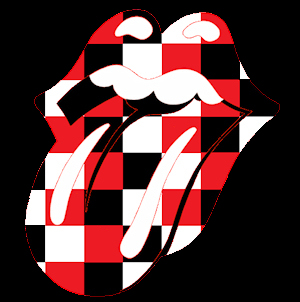
ROLLING STONES & MUDDY WATERS Live At The Checkerboard '81 (2012 Japanese only Limited Edition 6-disc [3-LP/DVD/2-CD] set - On 22nd November 1981, in the middle of their mammoth American tour, the Rolling Stones arrived in Chicago prior to playing 3 nights atthe Rosemont Horizon. Long influenced by the Chicago blues, the band paid a visit to Muddy Waters' club the Checkerboard Lounge to see the legendary bluesman perform. It didn't take long before Mick Jagger, Keith Richards, RonnieWood and Ian Stewart were joining in on stage and later Buddy Guy and Lefty Dizz also played their part. It was a unique occasion that was fortunately captured on camera. Now, restored from the original footage and with sound mixed and mastered by Bob Clearmountain, this amazing blues night is being made available in an official release for the first time. Each LP comes in their own sleeve with the two CD's and DVD together in a card panel, all housed in a clam shell style card picture box complete with two booklets and original obi-strip. This example is in the un-opened re-sealable bag, and remains in an unplayed, as new condition VQBD-10107)
***Limited to 2000 Copies Only in Japan.
: DVD
1. Sweet Little Angel
2. Flip Flop and Fly
3. Introduction
4. You Don't Have to Go
5. Country Boy
6. Baby Please Don't Go
7. Hoochie Coochie Man
8. Long Distance Call
9. Mannish Boy
10. Got My Mojo Workin'
11. Next Time You See Me
12. One Eyed Woman
13. Baby Please Don't Go (Instrumental)
14. Clouds in My Heart
15. Champagne and Reefer
16. Instrumental
Bonus Footage:-
You're Gonna Miss Me When I'm Gone
Black Limousine (From Hampton Coliseum, 1981)
CD
Disc 1
1. You're Gonna Miss Me When I'm Gone
2. Sweet Little Angel
3. Flip Flop and Fly
4. Introduction
5. You Don't Have to Go
6. Country Boy
7. I'm A King Bee
8. Trouble No More
9. Country Jail
10. Baby Please Don't Go
11. Hoochie Coochie Man
Disc 2
1. Long Distance Call
2. Mannish Boy
3. Got My Mojo Workin'
4. Next Time You See Me
5. One Eyed Woman
6. Baby Please Don't Go (Instrumental)
7. Clouds in My Heart
8. Champagne and Reefer
9. Instrumental 1
10. Instrumental 2
LP
Side One
1. You're Gonna Miss Me When I'm Gone
2. Sweet Little Angel
3. Flip Flop and Fly
4. Introduction
5. You Don't Have to Go
Side Two
1. Country Boy
2. I'm A King Bee
3. Trouble No More
Side Three
1. Country Jail
2. Baby Please Don't Go
3. Hoochie Coochie Man
Side Four
1. Long Distance Call
2. Mannish Boy
3. Got My Mojo Workin'
Side Five
1. Next Time You See Me
2. One Eyed Woman
Side Six
1. Baby Please Don't Go (Instrumental)
2. Clouds in My Heart
3. Champagne and Reefer
4. Instrumental 1
5. Instrumental 2
[eil.com]
++++++++++++++++++++++++
Review: Muddy Waters and The Rolling Stones Live at The Checkerboard Lounge, Chicago 1981 DVD/CD (2012)

— Muddy Waters on Mick Jagger
On a cold Winter night, November 22, 1981, the Rolling Stones arrived in Chicago. Smack in the middle of their North American ‘Tattoo You’ tour, just prior to playing 3 nights at the Rosemont Horizon, they paid their respects to their idol Muddy Waters by stopping by Buddy Guy’s Chicago ‘juke joint’ the Checkerboard Lounge, to see the legendary bluesman perform. It didn’t take long before Mick Jagger, Keith Richards, Ronnie Wood and Ian Stewart were joining Waters on stage. Later, Buddy Guy and Lefty Dizz joined them onstage, too.
This monumental and historic event was thankfully captured on camera. Restored from the original footage, with sound mixed and mastered by the legendary Bob Clearmountain, this official release (after many years of bootleg tapes circulating about) by Eagle Vision is a true must have for all fans of Chicago blues, Muddy Waters and the Rolling Stones. Eagle Vision outdid themselves here: giving it both nice packaging and a very reasonable price. The DVD itself is under $15.00, and the combo pack with the audio CD, with 11 of the 13 numbers, is only five bucks more. The camera work is excellent, with nice close ups that really allow the viewer to enjoy Waters and Jagger riffing with each other.
The whole show lasts 106 minutes, including two numbers up front by Waters’ band- without the ‘Hootchie Cootchie Man’ himself. Waters sings his classics and plays on some of them, although he did put away his guitar on some numbers. Jagger, Richards and Wood were on stage with Waters for quite a lot of songs, with both Waters and Jagger leaving the stage for two songs by guitarist/vocalist Lefty Dizz (though Wood and Richards remain on stage). With the inclusion of Junior Wells on that small stage it was one big musical event, to say the least.
The performances are quite loose-at some points rather chaotic-as the musicians jump on and off the low stage with tables right up to the edge. At other times the music is really tight and nothing less than brilliant. When the Stones showed up and began jamming, the band definitely picked up the pace, especially the rhythm section which did a tremendous job of ‘roping in’ the overall sound that night, preventing it from spiraling out of control.
During part of the show, Mick and Muddy take a seat to allow Jr. Wells, Buddy Guy and Lefty Dizz to take turns at center stage. Dizz, apparently more than a bit tipsy, ends his feature song standing precariously at the very edge of the stage, flailing his arms around, saying (or singing) something, without a microphone, to the audience . You can’t actually hear what he’s saying, but whatever he said to the audience (and the band) elicited reactions ranging from amusement to horror, lol! Wells had to take control of the stage at that point, literally pushing Dizz off stage.
It’s the inclusion of such spontaneous, unplanned sequences which gives one such an intimate, “I was there” feel while watching, yet avoids casting a pallor on the rest of the show. Add to this the simply first rate guitar playing (featuring some stunning solos) from Wood, Richards, Waters, Guy, and the guitarists in Muddy’s band, and you have an evening of blues music that was/is truly unforgettable.
Sadly, Muddy was in poor health at this time in his life (he passed away a mere two years afterward), and he spent most of the show sitting on a stool on stage. But when the band ripped into Mannish Boy, Muddy couldn’t keep in his seat: he was up and jumping around like a young man again! It was at that pivotal point in the show that one could see a glimpse of the power that Waters had once possessed in his prime.
The package includes 16 tracks on the DVD, eleven of which are featured on the CD. The DVD adds two bonus performances. The bonus features are cuts from the Hampton Coliseum 1981 show and are interesting in their own right. The DVD does not include the whole show, and the songs are edited to take out the dead spots when musicians are going on/off stage, etc. It also includes a well-assembled 8 page booklet that includes photos and an essay by Robert Gordon.
In his recent autobiography, Keith Richards describes how early in their career the Stones complained about playing rock and roll when their true goal was to be the best blues band in London. In this terrific DVD/CD compilation one can argue that the ‘passing of the torch’ so to speak was successfully made between generations. The Stones’ awe and admiration of ‘the master’ is clearly evident, and Muddy’s smile is genuine as he beams with obvious pride at his musical ‘children.’ As the old saying goes:the blues had a baby and they named it rock & roll!
Performers: Muddy Waters (vocals, guitar); Mick Jagger (vocals); Keith Richards (guitar); Ronnie Wood (guitar); Ian Stewart (piano); Buddy Guy (vocals, guitar); Lefty Dizz (vocals, guitar); Junior Wells (harmonica, vocals); George Mojo Buford (harmonica); Lovie Lee (piano); Earnest Johnson (bass); Ray Allison (drums); John Primer (guitar); Rick Kreher (guitar); Nick Charles (bass)


+++++++++++++








The Checkerboard Lounge was a blues club in Bronzeville on the South Side of Chicago, founded in the 1950s and owned for a period by Buddy Guy from 1972 to the early 1980s.
+++++++++++++++++++++++++++++++++++++++++++++++++++++
SIDEMAN
by Carlo Rotella

Guy (striped shirt) and company outside the Checkerboard, 1982. Photograph: Marc PoKempner
On the wall by my desk I have mounted a photograph of a confrontation that took place on the sidewalk outside the Checkerboard Lounge, at 43rd and Vincennes on the South Side of Chicago, in 1982. In the picture, the great bluesman Buddy Guy, who owned the Checkerboard back then, faces off against a young man in a hat who has his back to the camera. The young man, ejected from the club after some kind of beef, had stormed off to his car and returned wearing a jacket, with one hand jammed menacingly into one of its pockets. Guy and a crew of his supporters are lined up shoulder to shoulder to bar the way to the door, each privately calculating the odds that the young man really has a gun and would use it. Backing up the boss, from left to right, are Anthony, Guy’s aide-de-camp and security man; L. C. Thurman, who managed the club; and Aretta, who tended bar and waited tables. Standing with them, although he seems more observer or bystander than participant, is Lefty Dizz, a bluesman from Osceola, Arkansas, who hung out at the Checkerboard and hosted its Blue Monday jam for years.
Unlike the others, who strike appropriately forbidding poses—Anthony with drink in hand, Thurman with cigarette balefully pasted in mug, Aretta with hands on hips in iconic disapproval, Guy front and center with his whole being concentrated in the hands-down, shoulder-forward, head-cocked ready position that indicates a willingness to go all the way—Dizz seems bemused, even distracted. He’s the only one not fixing the troublemaker with a grim stare, and he’s holding something soft and bulky in front of him with both hands, probably a balled-up towel, presenting it with palms inward, like an offering or talisman. The others’ body English says, “Mess with me and you’ll regret it.” Dizz’s says, “Life is complex and filled with contingency; this would be a good time to step within for a taste of Old Grand-Dad.”
On that summer night in 1982, Marc PoKempner, a longtime photographer of the Chicago blues scene, happened to pull up to the curb outside the Checkerboard on his motorcycle just in time to shoot a sequence of pictures of the confrontation. I used a different shot from his sequence in a book called Good with Their Hands, published a decade ago. That one was taken from an angle farther around behind the young troublemaker, so that he almost entirely obscures Dizz. Guy has stepped more prominently forward in that one, Aretta’s not in it, and Thurman (who later wrested control of the Checkerboard from Guy) looks off to the side, all of which has the effect of making Guy seem isolated as he attends to yet another problem that an egregio virtuoso should be able to leave to his underlings. I put it in the book to evocatively illustrate Guy’s account of how difficult it was to run a club on the South Side in the 1970s and 1980s.
The version with Lefty Dizz may not be a better picture in the conventional sense—yes, the poses are more dramatic, but the troublemaker’s free hand is blurred, and Dizz, too, is not quite in focus—but it has an added valence that matters. Guy was the marquee name, the guitar hero whose ownership of the Checkerboard gave it a reputation as the capital of Chicago blues and attracted fellow greats like Muddy Waters and Otis Rush, insiders’ favorites like Fenton Robinson and Magic Slim, and rock stars like the Rolling Stones and Stevie Ray Vaughan, who dropped by the Checkerboard after playing sold-out arena gigs. Dizz, the only person I’ve ever met who bore a close resemblance to the Cat in the Hat, was by comparison a minor figure, a local character known for a couple of novelty songs—”I’m sitting here drinking my eggnog, but there’s nobody to drink with me / It’s the 25th of December, and I’m sad as a man can be”—and a gift for orchestrating a good time. He had a droll showbiz manner, and he was a distinctive, if limited, guitar player. He did a great deal of one-handed playing, part of a large repertoire of onstage gimmickry, but he wasn’t all tricks; he had a serviceable blues voice, and he had learned a thing or two about propulsive grooves from the blues-party juggernaut Hound Dog Taylor. Thanks to the quality of local talent and in great part to Dizz, an ideal emcee, the Checkerboard’s Monday night jam was a cut above all others. It usually started out in desultory fashion but built in intensity as musicians, patrons, smoke, inebriation, and sound accrued in the narrow, low-ceilinged room until some magical fission point was attained. On Tuesdays, still lost in the previous night’s music, I’d go around in a daze at school—more of a daze than usual, that is.
Dizz, whose given name was Walter Williams, was the most approachable of the Checkerboard’s notables. A generous fellow and a natural-born enthusiast, he showed a particular affection for the kids from my high school who hung out there. Dizz had studied economics at Southern Illinois University, but he enjoyed playing the down-home blues sage as much as we enjoyed playing at being barflies and connoisseurs. Each indulged the other. I liked to ask technical questions: “How do you make a song yours when other players already made it famous?” He liked to drop aphoristic advice on whippersnappers: “Take your time and listen. Don’t be all in a rush to play fast and blow everybody away. Take your time, and you’ll hear that note in that song that nobody else has heard.” He played an annual gig at my school, staying up all night with his band, the Shock Treatment, to make the early-morning assembly in the gym, where, bleary-eyed in his third-best suit, he performed a short set of his old reliables: “Baby, Please Don’t Go,” “The Things I Used to Do,” “Never Make My Move Too Soon,” “Bad Avenue,” “Somebody Stole My Christmas.”
When I showed up at the Checkerboard with my friends (a 13-year-old with cash in hand had no trouble getting in and buying a drink), he’d purse his lips and give us a mock-serious nod from the stage, and between sets he’d stop by to shoot the breeze. In good weather, we held our between-set colloquies outside the club on the sidewalk, standing around with our drinks in the desolation of 43rd Street, a once-thriving business strip that had fallen upon hard times. A mile to the west, the dark towers of the Robert Taylor Homes marched off along the expressway. They’re gone now, taken down by Daley the Second, but when I was a kid the projects seemed like an immemorial feature of the landscape. I suppose the glaciers seemed permanent as well, when the Laurentide ice sheet covered the upper Midwest.
Dizz is gone too; he died of cancer in 1993. When I look up from whatever I’m writing and gaze for a while at the picture on my wall, he comes back to me.


Yeah, this place was my favourite--at the time Buddy Guy and Junior Wells were the house band - Carlo Rotella
- See more at: [bcm.bc.edu]

Kirk West

James Cotton and Buddy Guy toast at Muddy's funeral wake at the Checkerboard Lounge
Chicago Blues: [physics.lunet.edu]
and playing rock and roll or any other form of popular music.”
[beatsfordinner.wordpress.com]

Re: Stones 1981-1982 Wardrobes
Posted by:
Palace Revolution 2000
()
Date: April 27, 2016 21:00
Exile Stones, I have said it 2 or 3 times already, I think: but your seemingly endless well of pics is astonishing. Incredible.
Re: Stones 1981-1982 Wardrobes
Posted by:
exilestones
()
Date: April 27, 2016 21:23
Quote
Palace Revolution 2000
Exile Stones, I have said it 2 or 3 times already, I think: but your seemingly endless well of pics is astonishing. Incredible.
Thanks. You are astonishing! I don't know how they keep coming.
Re: Stones 1981-1982 Wardrobes
Posted by:
exilestones
()
Date: April 28, 2016 14:30
LOS ANGELES
One of Princes most famous gigs, but for all the wrong reasons.

The band go straight into "Jack U Off" without pause. It's during this
song that it becomes apparent on the recording that they are playing to a hostile
audience. Midway through the song an audience member comments “Look at all that
trash”. I don’t know how much trash was thrown at them in the first couple of songs
(Hey, I’m only listening on my stereo, not watching it!), but now it seems like
the missiles are really coming at them.
The song ends with a loud and prolonged, “Boooooooo!”
It's notable for the conspicuous absence of Prince himself. After
whatever has gone down in the first few songs, he’s cut his losses and left the
stage. I have to give credit to the band. They stay on, in front of
94,000 Rolling Stones fans, and play on without Prince. Best of all, they still
sound good on "Uptown", a testament to how well rehearsed and professional they were.
Surprisingly the song itself doesn’t suffer too much from a lack of vocals. In
fact I kind of like this way. There is more room for the instruments to play, and
Dez is sounding great on this one!
Prince is back on board for the final song, "Why You Wanna Treat Me So Bad?"
(Is he singing it for the crowd?)
[www.princerecordings.com]
Edited 3 time(s). Last edit at 2016-04-29 07:38 by exilestones.
One of Princes most famous gigs, but for all the wrong reasons.

The band go straight into "Jack U Off" without pause. It's during this
song that it becomes apparent on the recording that they are playing to a hostile
audience. Midway through the song an audience member comments “Look at all that
trash”. I don’t know how much trash was thrown at them in the first couple of songs
(Hey, I’m only listening on my stereo, not watching it!), but now it seems like
the missiles are really coming at them.
The song ends with a loud and prolonged, “Boooooooo!”
It's notable for the conspicuous absence of Prince himself. After
whatever has gone down in the first few songs, he’s cut his losses and left the
stage. I have to give credit to the band. They stay on, in front of
94,000 Rolling Stones fans, and play on without Prince. Best of all, they still
sound good on "Uptown", a testament to how well rehearsed and professional they were.
Surprisingly the song itself doesn’t suffer too much from a lack of vocals. In
fact I kind of like this way. There is more room for the instruments to play, and
Dez is sounding great on this one!
Prince is back on board for the final song, "Why You Wanna Treat Me So Bad?"
(Is he singing it for the crowd?)
[www.princerecordings.com]
Edited 3 time(s). Last edit at 2016-04-29 07:38 by exilestones.
Re: Stones 1981-1982 Wardrobes
Posted by:
exilestones
()
Date: April 28, 2016 14:49
LOS ANGELES
Some of the nearly 100,000 people attending a Rolling Stones concert at the Los Angeles Coliseum are seen here in 1981.

This is Stones LA '81 gig but it's not the Stones pictured here.

George Rose
Edited 1 time(s). Last edit at 2016-04-29 07:41 by exilestones.
Some of the nearly 100,000 people attending a Rolling Stones concert at the Los Angeles Coliseum are seen here in 1981.

This is Stones LA '81 gig but it's not the Stones pictured here.

George Rose
Edited 1 time(s). Last edit at 2016-04-29 07:41 by exilestones.
Re: Stones 1981-1982 Wardrobes
Posted by:
exilestones
()
Date: April 29, 2016 05:43
HANNOVER:format(jpeg):mode_rgb():quality(90)/discogs-images/R-6826566-1427454236-6435.jpeg.jpg)
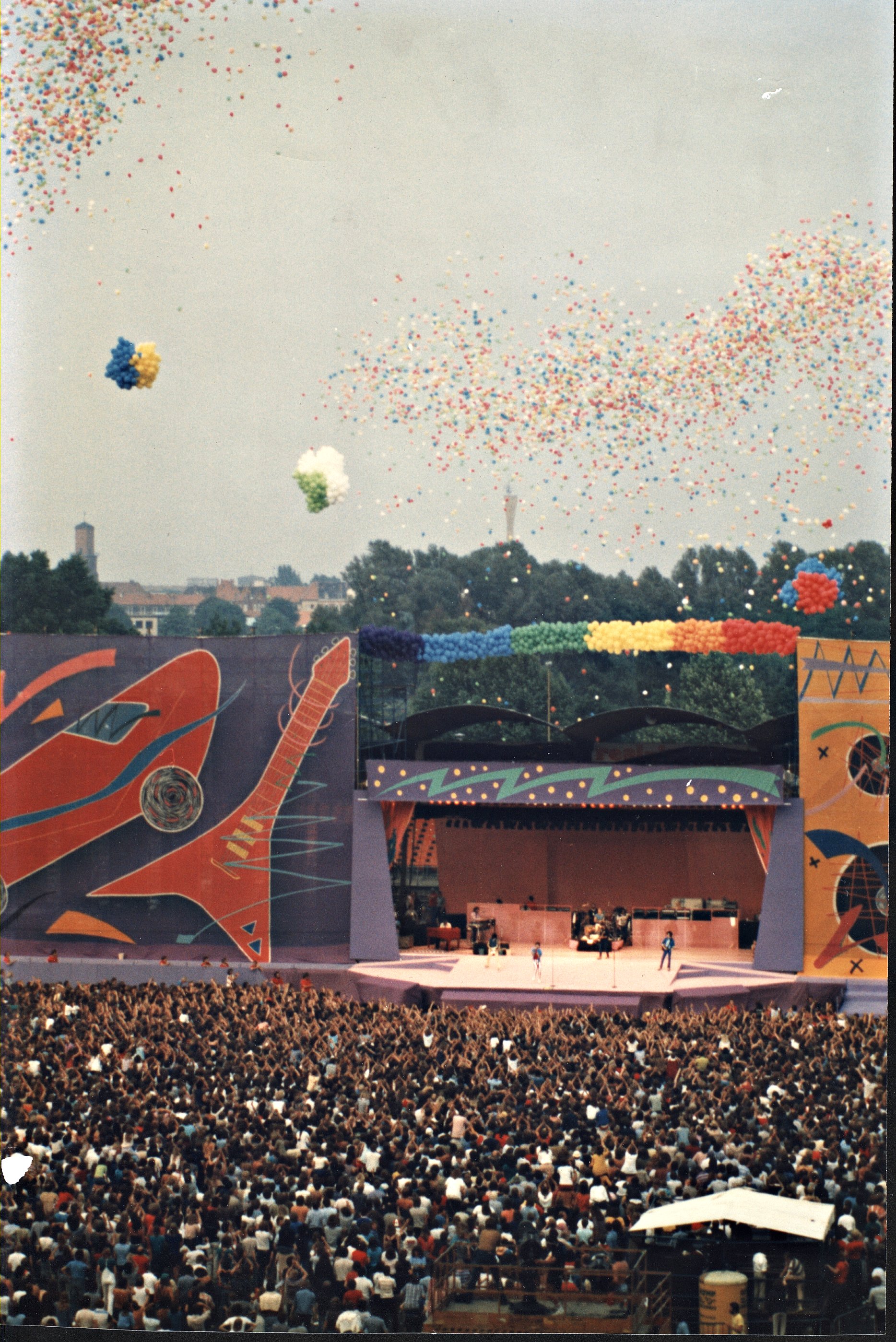

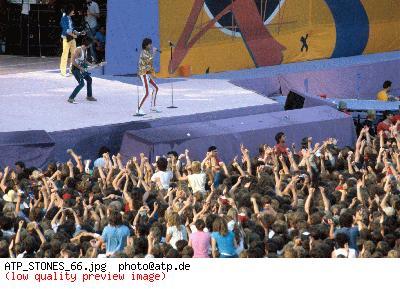
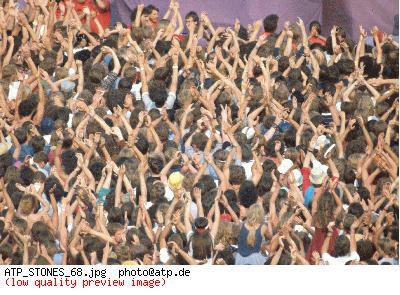
v
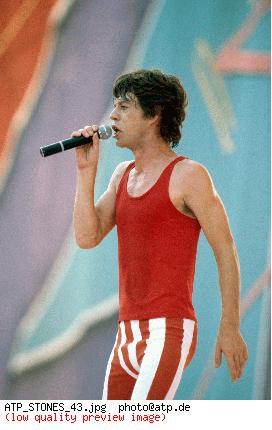
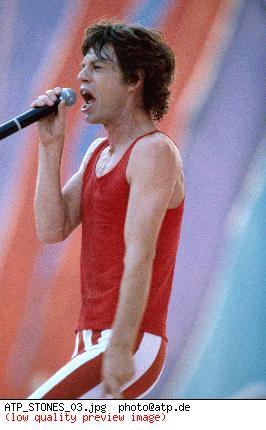
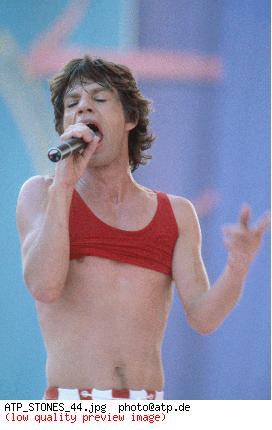


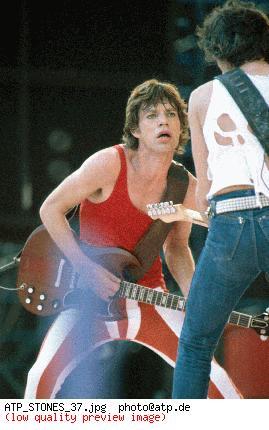

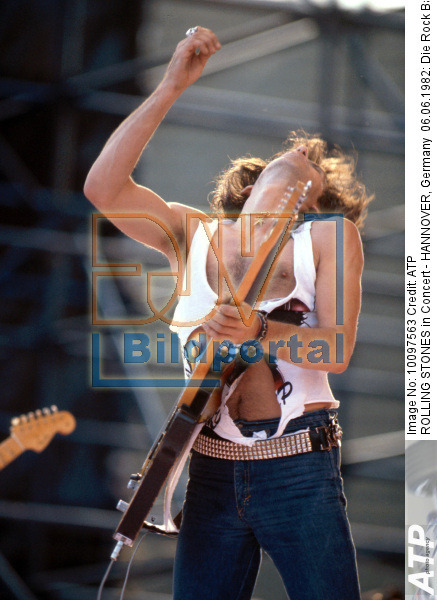
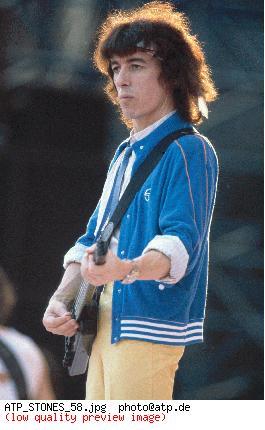
June 7, 1982
Edited 4 time(s). Last edit at 2016-04-29 07:25 by exilestones.
Re: Stones 1981-1982 Wardrobes
Posted by:
exilestones
()
Date: April 29, 2016 07:03
Quote
saltoftheearthQuote
exilestones
Mick Jagger rockte 1982 in engen Hosen und bauchfreiem Shirt die Bühne während eines Konzert in München.
Mick Jagger rocked 1982 in tight pants and belly free shirt the stage during a concert in Munich. (Source: imago / Rolf Hayo)
Is this really a Picture from Munich? I don't think so. On the first night (June 10)Jagger wore red and white pants while during the second night (June 11) it rained throughout the whole concert. Must be a picture from somewhere else.
It looks like Hannover, June 6, 1982. I just found more Hannover to post. See them soon!
Other Hannover images here: [www.iorr.org]
Edited 2 time(s). Last edit at 2016-04-29 07:06 by exilestones.
Re: Stones 1981-1982 Wardrobes
Posted by:
Palace Revolution 2000
()
Date: April 29, 2016 18:33
Amazing. More photos..haha..
I wonder if it were possible to create a type pf composite on the 81/82 tour, much like Harold Colson did for the 72 tour. Based on outfits, bolstered by pics - one charts all the shows.
I also wondered that about 75/76.
I wonder if it were possible to create a type pf composite on the 81/82 tour, much like Harold Colson did for the 72 tour. Based on outfits, bolstered by pics - one charts all the shows.
I also wondered that about 75/76.
Re: Stones 1981-1982 Wardrobes
Posted by:
Kennedy
()
Date: April 30, 2016 03:11
Officially my favorite thread ever.
Edited 1 time(s). Last edit at 2016-04-30 03:12 by Kennedy.
Edited 1 time(s). Last edit at 2016-04-30 03:12 by Kennedy.
Sorry, only registered users may post in this forum.
Online Users
ChrisL , CHRISTIANF , esqcjh , GAFF , Irix , john lomax , kovach , marclaff , MJAGGER123 , Muddyw , NashvilleBlues , RG , rogerriffin , THE DON , Topi , Torsten , TumblinDice76 , voodoodrew
Guests:
1991
Record Number of Users:
206
on June 1, 2022 23:50
Record Number of Guests:
9627
on January 2, 2024 23:10















